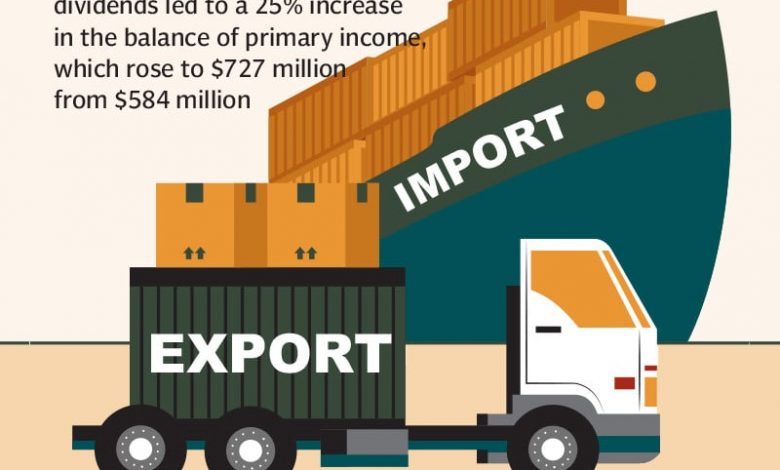C/A deficit hits $162m in July

Pakistan posted a current account deficit (CAD) of $162 million in the first month (July) of the current fiscal year 2024-25, slightly exceeding market expectations and the average of the past 12 months, yet still remaining well within the targeted limit.
The current account deficit occurred due to increased imports of goods to support economic activities and the apparent elevated repatriation of profit and dividends by foreign firms operating in Pakistan to their headquarters abroad. However, robust inflows of workers’ remittances sent home by overseas Pakistanis and an uptick in export earnings, led by technology exports, partially offset the deficit, limiting it to $162 million for the month.
According to data from the State Bank of Pakistan (SBP), the current account deficit was significantly reduced by 78% in July compared to $741 million in the same month last year. It also represents a 38% decrease compared to the previous month of June, which recorded a deficit of $313 million, marking the third consecutive month of a current account deficit.
For the full fiscal year 2023-24 (FY24), the current account deficit stood at $665 million (0.2% of GDP), which was almost 80% lower than the $3.27 billion deficit recorded in FY23. The monthly average CAD for FY24 was $55.41 million, indicating that the deficit of $162 million in July 2024 is three times the average of the past 12 months. However, this latest deficit is still within the projected limit of 0-1% of GDP (around $300 million per month) for FY25.
Tahir Abbas, Head of Research at Arif Habib Limited, told The Express Tribune that “the robust inflows of workers’ remittances are the game changer, narrowing down the current account deficit within manageable limits.” He explained that a 20% increase in the trade deficit to $2.4 billion, driven by a notable surge in imports in July compared to the same month last year, led to the current account deficit. However, a 48% spike in workers’ remittances (year-on-year) to $3 billion offset a significant portion of the deficit.
Abbas projected that the government would continue measures to keep the current account deficit within manageable limits throughout the fiscal year 2024-25, as the import-led domestic economy cannot afford to run a larger deficit to support aggressive economic growth amid low foreign exchange reserves. He pointed out that the government has adopted a strategy to ensure that import payments do not surpass the sum of export earnings and inflows of workers’ remittances. This approach aims to achieve sustainable economic growth until foreign exchange reserves are boosted beyond current requirements.
Abbas noted that while inflows of foreign currencies remain significant in the domestic economy, notable foreign debt repayments and interest payments consume a considerable portion of these inflows each month. The situation would improve with a significant rise in export earnings and further growth in workers’ remittances.
He cautioned that the uptrend in global commodities, particularly petroleum products, may pose a risk to the stabilised economy. Additionally, any discontinuation of the current strategy to control imports within available resources could revive the balance of external payment crisis and destabilise the rupee-dollar parity.
In July, goods imports rose 16% to $4.82 billion compared to $4.14 billion in the same month last year. Meanwhile, goods exports improved by 13% to $2.39 billion, up from $2.12 billion in the corresponding month of the previous year.
Elevated repatriation of profit and dividends led to a 25% increase in the balance of primary income, which rose to $727 million from $584 million.
Foreign direct investment up
Topline Research reported that Pakistan attracted $136 million in FDI in July 2024, a 64% year-on-year increase, though it was down 19% compared to the previous month.
China, the world’s second-largest economy, remained the leading investor in Pakistan, injecting $45 million in July, followed by Hong Kong with $42 million. The United Kingdom and the United States invested $22 million and $13 million, respectively.
The power sector attracted the single largest FDI of $62 million, followed by $30 million in the oil and gas exploration sector and $20 million in the financial sector.





